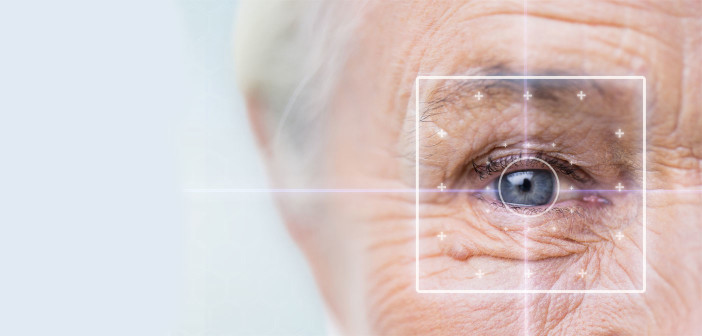Age-related Macular Degeneration (AMD) is one of the leading causes of blindness in the United States, affecting approximately 15 million Americans and 170 million people worldwide. At the present time, this neurodegenerative disease has no cure. There are several risk factors that are associated with the disease:
- Age (>50 years old)
- Genetics (family history of parents or siblings with AMD)
- Ethnicity (more prevalent in European descents)
- Lighter eyes (blue eyes are more susceptible)
- UV exposure (sunlight)
- Smoking tobacco
- Cardiovascular risk factors (hypertension, obesity, high cholesterol)
Classification/Symptoms
AMD is classified simply in two ways: dry and wet. There are three subgroups in dry macular degeneration: Early, Intermediate and Advanced. These are distinguished by the amount of yellow deposits that have accumulated in the bottom layers of the retina (where nerve impulses are triggered and pass via the optic nerve to the brain, where a visual image is formed).
In advanced macular degeneration, there may be a complete loss of the retinal pigment layer (RPE), which leads to the loss of the photoreceptor layer that is vital for us to process images. This results in distortion and blurriness, or loss of images over time. The progression to wet macular degeneration occurs when this loss of RPE leads to the growth of abnormal blood vessels that tend to cause fluid leakage, or hemorrhage. At this stage of the disease, people may experience a sudden decrease in vision, blurred vision, distortion, or portions of images completely missing.
Treatment
The treatment for dry macular degeneration is a specific formulation of vitamins that were discovered to be beneficial in the AREDS2 (Age-Related Eye Disease Study) trial. This includes an oral supplementation of 500mg vitamin C, 400IU of vitamin E, 2mg of copper, 25mg or 80mg of zinc, 10mg of lutein and 2mg of zeaxanthin. Over a five-year follow-up, the study showed that the treatment decreases the chances of advancement by 25 percent.
With wet macular degeneration, people have a high level of vascular endothelial growth factor (VEGF) a protein which is released from the abnormal blood vessels. The treatment involves injection of medication that decreases the VEGF level. Each of the three main options for injection have been proven to be effective. The medication is injected directly into the vitreous cavity of the eye.
The schedule of treatment is usually determined by the retina specialist and dependent on response to the treatment. Injections can be administered monthly or with a treat-and-extend protocol. Some specialists elect to do injections on an as-needed basis, but the patient requires very close monitoring. It is important to understand that these injections are not a cure for AMD, but rather, a treatment, thus decreasing the chances of disease progression and in some cases, improving visual acuity.
If you have risk factors for AMD, it is important to be monitored on a regular basis by your eye care provider. People diagnosed with macular degeneration tend to do better with early detection and treatment.
At the present time, this neurodegenerative disease has no cure. It is important to be monitored on a regular basis with your eye care provider if you have certain risk factors.


















